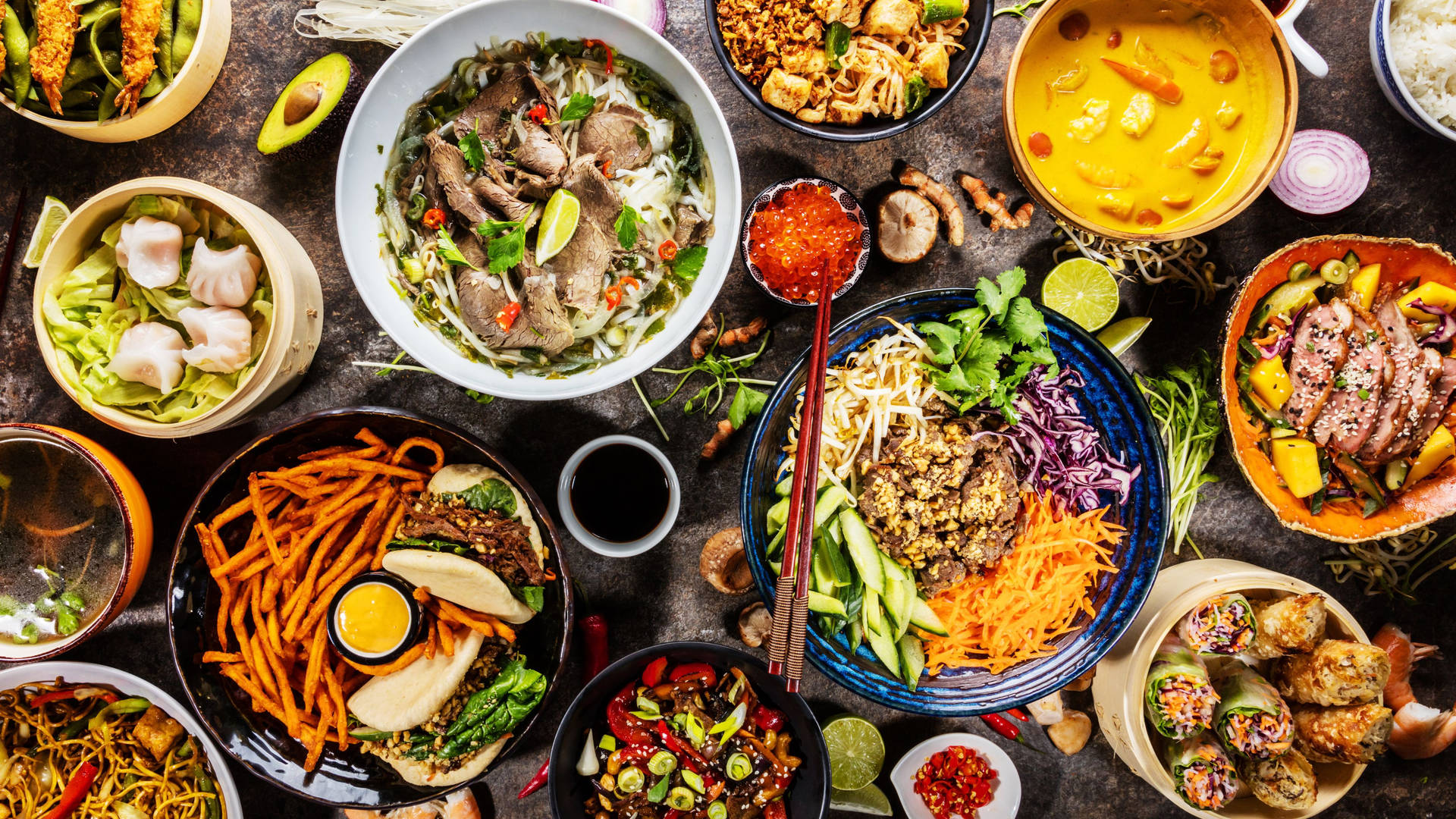Spain, a land of sun-drenched coasts, vibrant cities, and passionate culture, is equally renowned for its exceptional cuisine. Spanish food is more than just sustenance; it’s an integral part of the country’s identity, history, and social fabric. From the bustling tapas bars of Barcelona to the family-run restaurants of Andalusia, Spain offers a culinary experience that tantalizes the taste buds and leaves a lasting impression.
This article embarks on a delectable journey through some of the most iconic and celebrated foods of Spain, exploring their origins, flavors, and cultural significance.
1. Paella: The Jewel of Spanish Cuisine
No discussion of Spanish food is complete without mentioning paella. This iconic rice dish, originating from Valencia, is a true masterpiece of flavors and textures. Paella is traditionally cooked in a large, shallow pan (also called a paella) over an open fire, allowing the rice to develop a crispy, caramelized crust known as the socarrat.
The classic paella Valenciana features a combination of rabbit, chicken, snails (optional), and a variety of vegetables such as ferraura (green beans) and garrofó (lima beans). Saffron, the golden spice that imparts its distinctive color and aroma, is an essential ingredient.
Over time, countless variations of paella have emerged, including seafood paella (paella de marisco), mixed paella (paella mixta), and even vegetarian paella. Each region of Spain boasts its own unique take on this beloved dish, showcasing the diversity of local ingredients and culinary traditions.
2. Tapas: A Culinary Adventure in Miniature
Tapas are the heart and soul of Spanish social life. These small, savory dishes are typically served with drinks in bars and taverns, encouraging people to gather, chat, and share a variety of flavors. The origins of tapas are debated, but one popular theory suggests they originated as small snacks served to cover (tapar) drinks, preventing flies from entering.
Today, tapas have evolved into a diverse and creative culinary art form. From simple classics like patatas bravas (fried potatoes with spicy sauce) and gambas al ajillo (garlic shrimp) to more elaborate creations like pulpo a la gallega (Galician-style octopus) and croquetas (breaded and fried béchamel fritters), there’s a tapa to suit every palate.
Tapas are not just about the food; they’re about the experience. Hopping from bar to bar, sampling different tapas at each stop, is a quintessential Spanish pastime known as ir de tapas.
3. Jamón Ibérico: The Crown Jewel of Spanish Cured Meats
Jamón Ibérico is arguably the most prized and luxurious cured meat in the world. Made from the meat of Iberian pigs, which roam freely in oak forests and feed on acorns (bellotas), this ham is characterized by its rich, nutty flavor and melt-in-your-mouth texture.
The curing process for Jamón Ibérico can take up to three years, allowing the flavors to develop and intensify. The ham is typically sliced thinly and served at room temperature, allowing the aromas to fully release.
There are different grades of Jamón Ibérico, depending on the pig’s diet and the curing process. Jamón Ibérico de Bellota, the highest grade, comes from pigs that have fed exclusively on acorns during the montanera season (the acorn-feeding period).
4. Gazpacho: A Refreshing Taste of Summer
Gazpacho is a cold soup originating from Andalusia, perfect for beating the summer heat. Made from a blend of ripe tomatoes, cucumbers, peppers, onions, garlic, olive oil, and vinegar, gazpacho is a refreshing and nutritious dish that’s packed with vitamins and antioxidants.
While the traditional gazpacho is tomato-based, there are many variations, including white gazpacho (ajo blanco), which is made with almonds, garlic, and bread. Gazpacho is typically served chilled and garnished with chopped vegetables or croutons.
5. Tortilla Española: A Simple Yet Satisfying Classic
Tortilla Española, also known as Spanish omelet, is a simple yet satisfying dish that’s a staple in Spanish households and tapas bars. Made from potatoes, onions, and eggs, this thick omelet is cooked slowly in olive oil until golden brown and slightly caramelized.
The Tortilla Española can be served hot or cold, and it’s often enjoyed as a tapa, a main course, or a snack. Some variations include adding chorizo, peppers, or other vegetables.
6. Churros: A Sweet Treat to Start the Day (or End the Night)
Churros are fried dough pastries that are popular throughout Spain and Latin America. Made from a simple dough of flour, water, and salt, churros are typically piped through a star-shaped nozzle and fried until golden brown and crispy.
Churros are often served with a cup of thick, hot chocolate, perfect for dipping. They’re a popular breakfast treat, but they can also be enjoyed as a dessert or a late-night snack.
7. Seafood: A Bounty from the Sea
With its extensive coastline, Spain boasts an abundance of fresh seafood. From grilled sardines and fried calamari to succulent prawns and flavorful mussels, Spanish seafood dishes are a true delight for seafood lovers.
Galicia, in northwestern Spain, is particularly renowned for its seafood, including octopus, scallops, and spider crabs. Paella de marisco, as mentioned earlier, is another popular way to enjoy Spanish seafood.
8. Fabada Asturiana: A Hearty Stew from the North
Fabada Asturiana is a hearty bean stew originating from Asturias, a region in northern Spain. Made with fabes (large white beans), chorizo, morcilla (blood sausage), and tocino (bacon), this stew is a warming and comforting dish that’s perfect for cold winter days.
Fabada Asturiana is traditionally cooked slowly in a large pot, allowing the flavors to meld together. It’s a substantial and filling dish that’s sure to satisfy even the heartiest appetite.
9. Crema Catalana: A Sweet Ending
Crema Catalana is a traditional Catalan dessert that’s similar to crème brûlée. Made from a custard base of milk, eggs, sugar, and citrus zest, this dessert is topped with a layer of caramelized sugar that’s cracked open with a spoon before serving.
Crema Catalana is a rich and creamy dessert that’s perfect for ending a meal on a sweet note.
10. Wine: A Perfect Pairing
No culinary journey through Spain would be complete without mentioning its exceptional wines. From the robust reds of Rioja and Ribera del Duero to the crisp whites of Albariño and Verdejo, Spanish wines are the perfect complement to the country’s diverse cuisine.
Sherry, a fortified wine from Andalusia, is another Spanish specialty that’s often enjoyed as an aperitif or with tapas.
Conclusion
Spanish food is a reflection of the country’s rich history, diverse geography, and vibrant culture. From the iconic paella to the humble tortilla Española, each dish tells a story and offers a unique taste of Spain. Whether you’re exploring the tapas bars of Barcelona or savoring a seafood feast on the Galician coast, a culinary adventure awaits in every corner of this captivating country.


